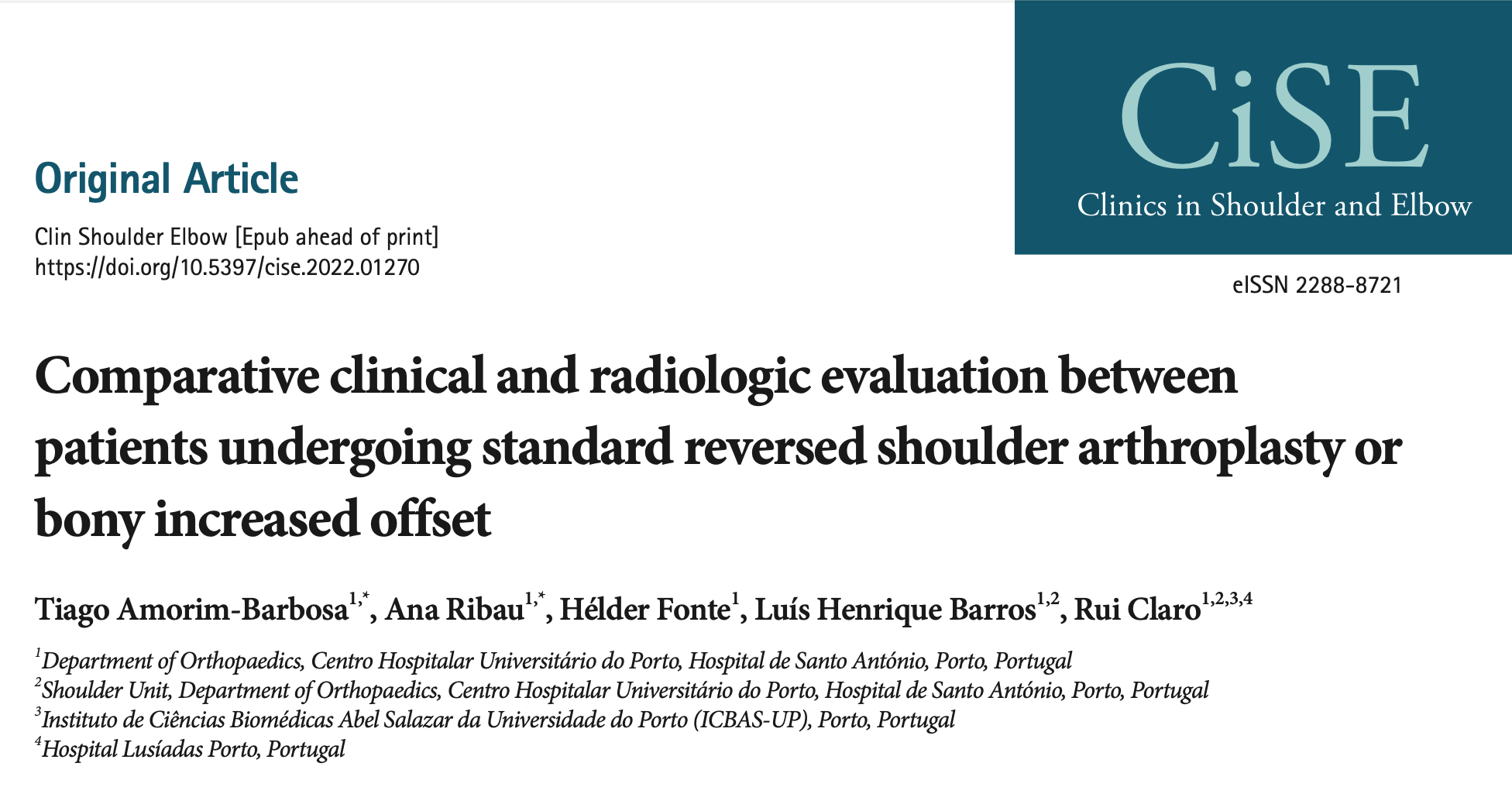Abstract
Background:
Modifications of the medialized design of Grammont-type reverse
shoulder arthroplasty (RSA) using a bony increased offset (BIO-RSA) has
shown better clinical results and fewer complications. The aim of this
study is to compare the clinical results, complications, and
radiological outcomes between patients undergoing standard RSA and
BIO-RSA.
Methods:
A retrospective review was performed of 42 RSA procedures (22
standard RSA and 20 BIO-RSA). With a minimum of 1 year of follow-up,
range of motion (ROM), Constant shoulder score (CSS), visual analog
scale (VAS), and subjective shoulder score (SSS) were compared.
Radiographs and computed tomography (CT) scan were examined for scapular
notching, glenoid and humeral fixation, and graft healing.
Results:
At a mean follow-up of 27.6 months (range, 12-48 months), a
significant difference was found for active-internal rotation (P=0.038)
and for passive-external rotation (P=0.013), with better results in
BIO-RSA. No other differences were found in ROM, CSS (P=0.884), VAS
score, and SSS. Graft healing and viability were verified in all
patients with CT scan (n=34). The notching rate was 28% in the standard
RSA group and 33% in the BIO-RSA group, but the standard RSA had more
severe notching (grade 2) than BIO-RSA (P=0.039). No other significative
differences were found in glenoid and humeral fixation.
Conclusions:
Bone-graft lateralization is associated with better internal and
external rotation and with less severe scapular notching compared to the
standard RSA. Integration of the bone graft occurs effectively, with no
relevant changes observed on radiographic evaluation.
Amorim-Barbosa T, Ribau A, Fonte H, Barros LH, Claro R. Comparative clinical and radiologic evaluation between patients undergoing standard reversed shoulder arthroplasty or bony increased offset. Clin Shoulder Elb. 2023 Mar;26(1):3-9. doi: 10.5397/cise.2022.01270. Epub 2023 Jan 17. PMID: 36919501; PMCID: PMC10030991.


